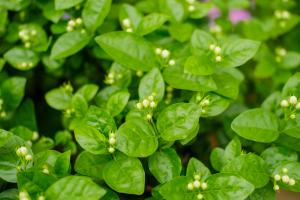How Many Trees Did FDR Plant?
Franklin D. Roosevelt, the 32nd President of the United States, is known for his social and economic policies that helped the country recover from the Great Depression. However, he is also remembered for his conservation efforts, particularly his love for trees.
The Civilian Conservation Corps
During his presidency, FDR established the Civilian Conservation Corps (CCC), a program that provided employment opportunities for millions of young men. The CCC’s primary mission was to conserve natural resources and develop outdoor recreation facilities. The program also played a vital role in reforestation efforts throughout the country. From 1933 to 1942, the CCC planted approximately three billion trees across the United States.
The Great Plains Shelterbelt Project
In addition to the CCC, FDR also initiated the Great Plains Shelterbelt Project. As part of this program, farmers were encouraged to plant trees as windbreaks to protect their crops from soil erosion and drought. Unlike the CCC, the Shelterbelt Project was not solely focused on reforestation, but it still played a significant role in increasing the number of trees planted during FDR’s presidency. By the time the project ended in the early 1950s, over 220 million trees had been planted across the Great Plains.
Personal Efforts
Aside from his official programs, FDR also had a personal love for trees. He owned a large estate in New York called Hyde Park, where he devoted a lot of his time to landscaping and planting trees. According to records, FDR planted over 10,000 trees on his estate, including oak, elm, and spruce varieties. He also helped to establish a tree nursery on the grounds of his estate, which supplied trees to the CCC and other reforestation projects.
Legacy
FDR’s efforts have had a lasting impact on the United States’ environment. The trees planted by the CCC and Shelterbelt Project helped to combat soil erosion and preserve natural habitats for wildlife. Additionally, the reforestation efforts helped to combat the effects of the Dust Bowl, a severe drought that affected the Great Plains in the 1930s. FDR’s personal work has also left a legacy, as the trees he planted at Hyde Park still stand today and continue to provide beauty and shade for visitors.
Conclusion
In conclusion, FDR’s commitment to conservation and reforestation resulted in the planting of billions of trees across the United States during his time in office. While his economic and social policies have had a significant impact, his efforts in tree planting and conservation have served as a lasting legacy to his commitment to environmental preservation.

 how many times do yo...
how many times do yo... how many planted tre...
how many planted tre... how many pine trees ...
how many pine trees ... how many pecan trees...
how many pecan trees... how many plants comp...
how many plants comp... how many plants can ...
how many plants can ... how many plants and ...
how many plants and ... how many pepper plan...
how many pepper plan...




























